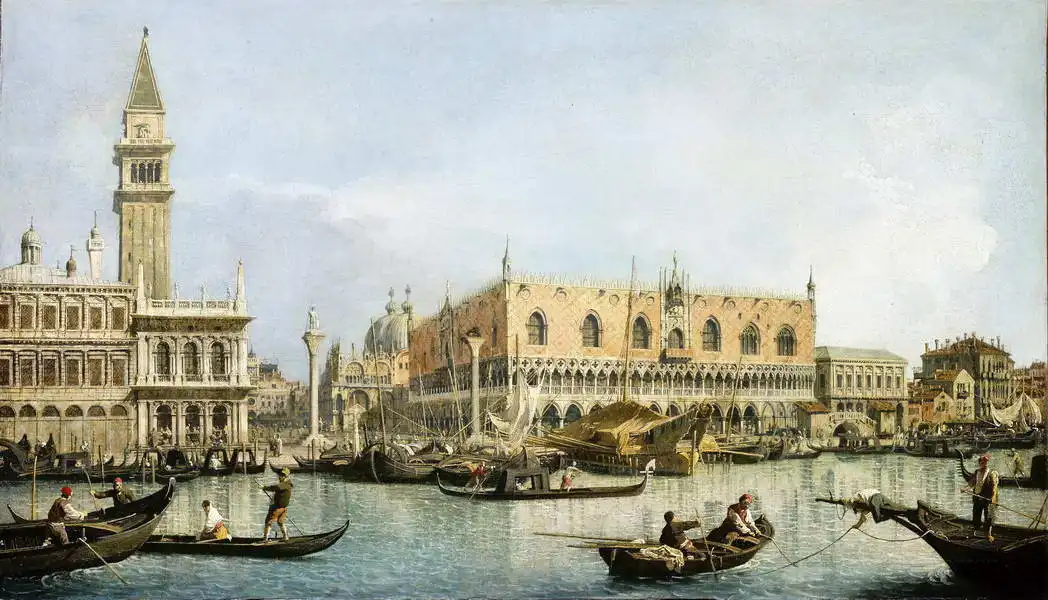About this finishing
Print. The image is printed on the top quality 10-ink HP Z9PS printer on HP matte 270 g / m2 paper. You can choose any size to an accuracy of 1 cm. A margin of 5 cm around the image is added to the size of the motif.


You can find a detailed description about our finishings
here.
Pier viewed from St. Mark
"The Pier, seen from St. Mark's" (Italian "Molo visto da San Marco") is a famous painting by
Giovanni Antonio Canaletto . Canaletto was known for his precise views of
Venice , and this painting is one of his most famous works. The square is the central space of Venice and was historically important for the political, religious and cultural life of the city. The painting shows a square covered with stone tiles that reflect light reflections. In the background stands out the famous cathedral of St. Mark with its characteristic domes and statues on top. The buildings around the square are elegant and decorated with
architectural details. Figures and figures can be seen in the square, adding liveliness and movement to the picture. You can see nobles, merchants, townspeople and other people gathering in the square. With his well-known meticulous attention to detail, Canaletto was able to create the impression of a realistic view of this famous Venetian site.
Prevailing color of this fine art print is vivid and its shape is long. This image is printed on demand - you can choose material, size and finishing.
Canaletto (1697-1681) was born in Venice. He, along with his brother, learned painting from his father. He started as a painter of theatrical backdrops. In his free time, he painted everyday urban life. When he left his father’s workshop, he went to Rome for inspiration. There, he perfected his fondness for painting architectural elements. This can be seen in the detailed
Baroque paintings of
Venice, where he captured Venice in the period of its greatest beauty and glory. Thanks to the merchant Joseph Smith, Canaletto’s paintings were sold even in England. However, in 1740, the war disrupted the market and a the flurry of British tourists traveling to Venice decreased. This prompted Canaletto to travel to London to keep his clientele. However, English critics described his work as repetitive, and he was labelled a fraud. He did not manage to fix his and so he returned to Venice, where he became a member of the Academy of Arts and painted until his death in 1768.


